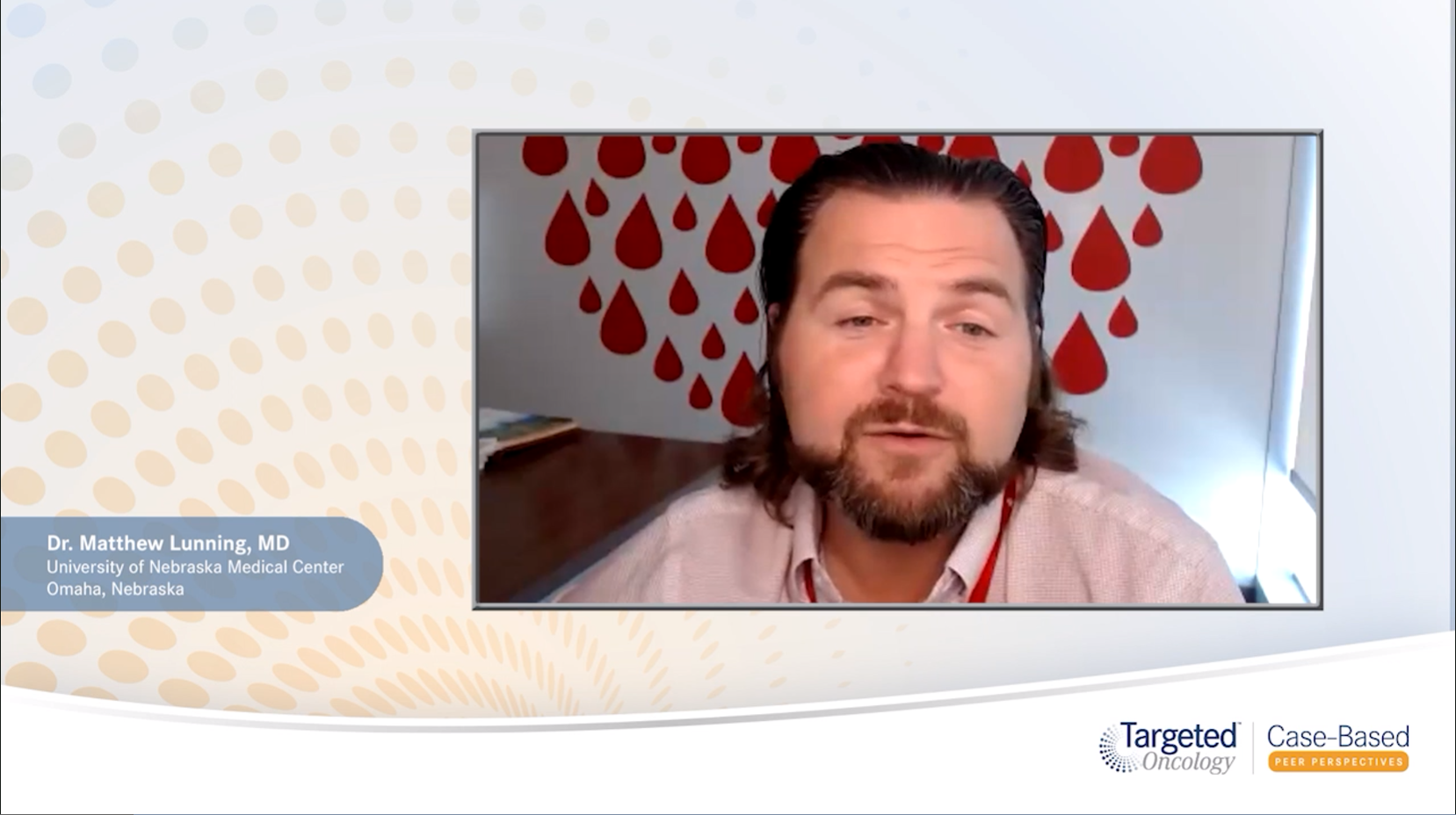Novel Treatment Options in Diffuse Large B-Cell Lymphoma
Gilles Salles, MD: There have been many new options for patients with diffuse large B-cell lymphoma [DLBCL] that have been available in the last few years. A major form of progress is the development of engineered T cells, also called CAR [chimeric antigen receptor] T cells. CAR T-cell therapy made a breakthrough 2 years ago showing that a patient with relapsed/refractory disease can achieve a substantial rate of response and complete response, and durable, complete response. However, the additional toxicities that are very specific to this treatment, such as the cytokine release syndrome, as well as the risk of neurological events, is a complicated process to put into treatment. We have to organize leukapheresis, we have to wait until the cells are manufactured, which may take a couple of weeks. We have to get insurance approval for these patients, so it is an efficient treatment, but it has also its constraints that can prevent the use in some patients.
Another recent approval was the antibody-drug conjugate against CD79, called polatuzumab vedotin, which was approved based on the randomized phase 2 study in combination with bendamustine/rituximab, achieving a 40% response rate, with the majority achieving a complete response and then a duration of response. This also represents an interesting option for our patients. There are also some hematological toxicity and infectious toxicity, as well as particular neurological toxicities that are linked to the toxin that is included in the antibody-drug conjugate, which appears to be well manageable and essentially of grade 1/2, but is obviously a spectrum of toxicity that is a little particular.
Finally, another drug was approved in the third-line treatment of diffuse large B-cell lymphoma, which is the first inhibitor of a molecule called XPO1. It is selinexor and this drug, which is an oral agent, can be delivered to the patient with some precautions regarding to fatigue, appetite, and other issues, but achieved a modest response rate. This is encouraging enough to allow the drug to be approved.
If we think about how we can choose a treatment and the different options, we first need to see whether the patient is right for the criteria of the approved drug. Chemotherapy plus rituximab combination will probably continue to be mainstream as a second option for patients, but with tafasitamab/lenalidomide, we may have an encouraging and interesting option for these patients. Probably more particularly for patients who have had some delay between the first treatment with R-CHOP [rituximab plus cyclophosphamide, doxorubicin, vincristine, and prednisone] and a relapse after 1 year or more. Even then, we can use it in patients who are refractory and test it there.
One concern that was raised regarding the use of this combination and the use of CAR T-cell therapy are that both agents actually target the same CD19 antigen, bringing the hypothesis that exposing the cell to tafasitamab before the use of CAR T may eventually diminish or abolish the expression of CD19. In fact, we have no data to support that. There have been anecdotal reports of treatment as it has been exposed to tafasitamab with CAR T, but this is still a work in progress and we have to make sure that in thinking about the different sequencing of treatment, we don't oppose 1 treatment above the others. Unfortunately, we know that 1 patient at least who failed CAR T therapy has lost CD19 expression. So we have to think and discuss with the patient the different options and how we will sequence them: the classic immunochemotherapy, the availability of tafasitamab/lenalidomide, the CAR T cell, and eventually, the polatuzumab vedotin or selinexor.
We should have conversations with our patients regarding the different options that are available. Immune-based options, such as tafasitamab/lenalidomide. More complicated, but with marked efficacies, the CAR T cell is in third line until we get more data, and other combinations that are available with cytotoxic agents and targeted molecules. Having a good discussion with the patients and their relatives could help us to choose the optimal strategy to control relapsed/refractory DLBCL for each individual patient. Thank you for your attention.
Transcript edited for clarity.
Case: A 74-Year-Old Man with Diffuse Large B-Cell Lymphoma
Initial Presentation
- A 74-year-old man presented with fever, 14-lb unintentional weight loss and occasional chest pain
- PMH: DM, medically controlled
- PE: tired-appearing man; palpable bilateral cervical lymphadenopathy
Clinical Work-up
- Labs: LDH 2 times above normal; Hb 10.8 g/dL; bilirubin 2.3 mg/dL; creatinine 1.7 mg/fl; all others WNL
- Hepatitis B, C and HIV negative
- Lymph node biopsy; CD 20+ confirmed DLBCL; IHC panel: CD 10+, CD 19+
- Imaging:
- Whole body PET/CT scan showed activity the cervical lymph node region, largest node 2.5 cm; evidence of axillary and thoracic subcutaneous tissue involvement
- Ann Arbor stage 4; IPI: high-risk; ECOG PS 1
Treatment
- Treatment initiated with R-CHOP + RT; well-tolerated
- Interim PET scan after 4 cycles; progressive diseases noted
- Due to transplant ineligibility patient was treated with tafasitamab + lenalidomide









